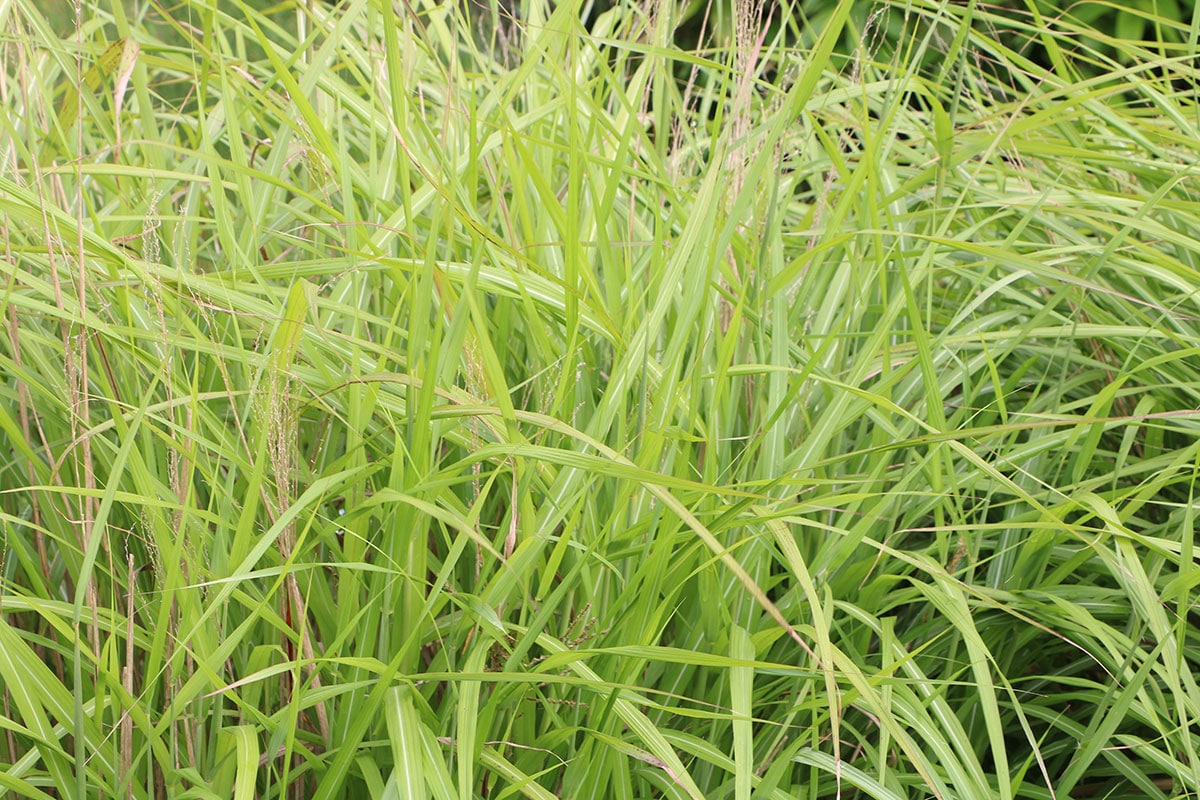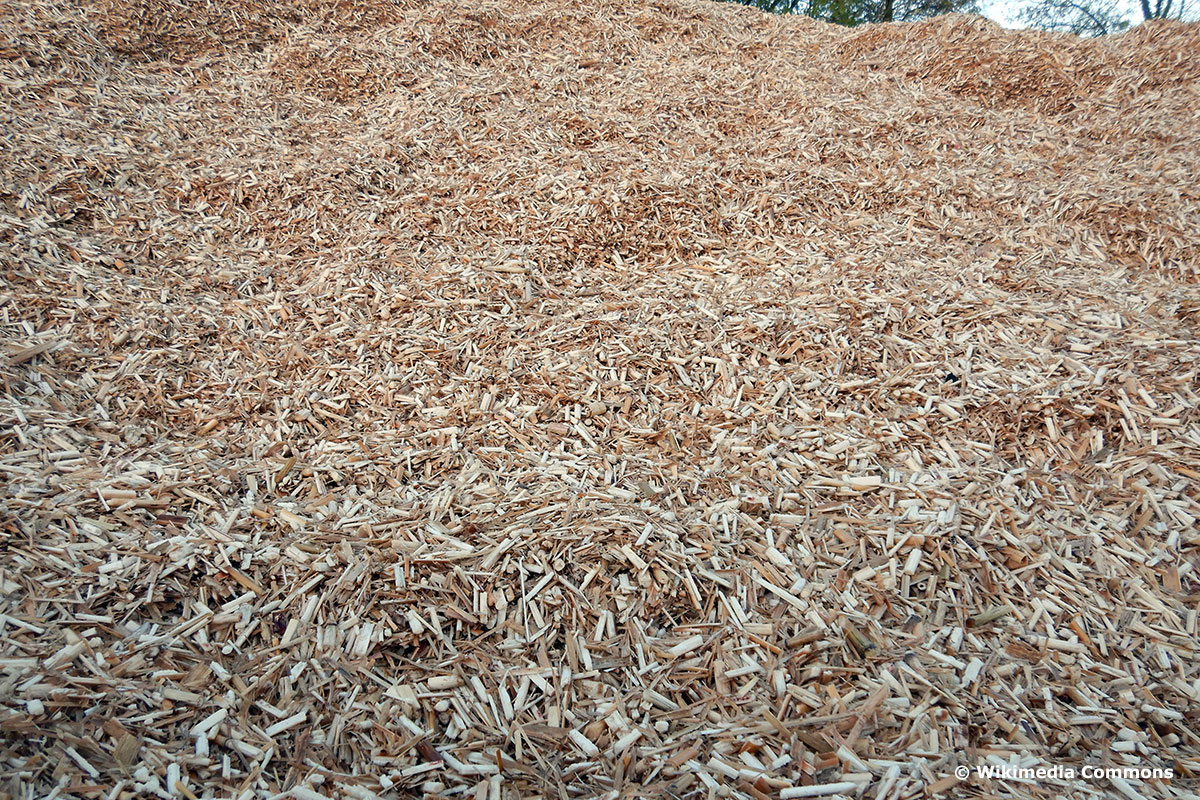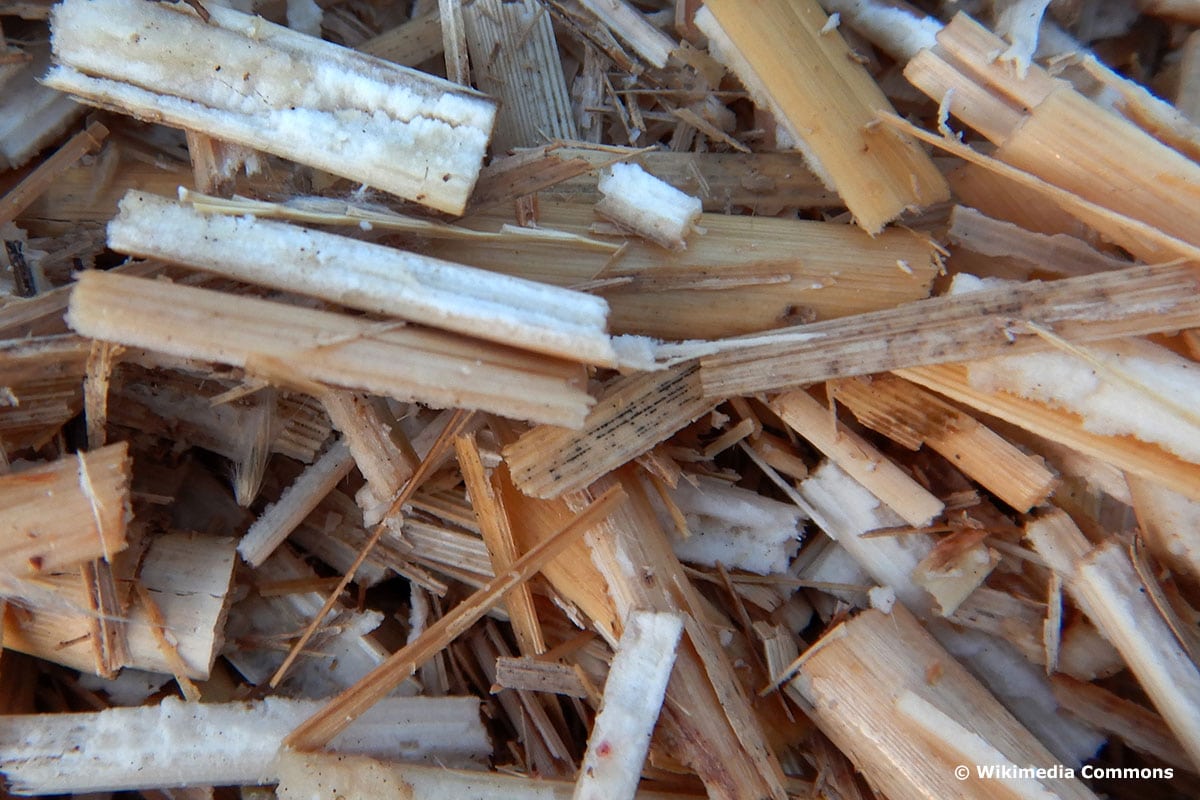Miscanthus is increasingly being offered as an interesting mulch alternative.
Contents
- 1 pH-neutral mulch alternative
- 2 Effective against snails
- 3 Effective against weeds
- 4 Moisture storage
- 5 Odorless mulch
- 6 Durable and productive
- 7 Airy alternative
- 8 Neutral shade
- 9 What layer thickness is used?
- 10 What needs to be considered when spreading Miscanthus mulch?
- 11 Are miscanthus suitable for winter protection?
- 12 Author
pH-neutral mulch alternative
One of the biggest advantages to miscanthus, or elephant grass, is its pH neutrality. As a result, the mulch does not remove oxygen from the soil, even if it remains on the ground for years. Bark mulches from coniferous trees are often in acidic soils and can thus store toxic cadmium. The cadmium can then leach into the soil of the bed and accumulate in your crops. This is not the case with miscanthus as a mulch alternative. In addition to cadmium accumulation, miscanthus protects soils from the following problems that can result from acidification:
- weak humus development
- poor soil structure
- soils dry out faster
- leached nutrients
- useful microorganisms die off more quickly
- lower crop yields

Effective against snails
Miscanthus chaff become an established snail guard due to its nature. The sharp-edged leaves are not pleasant for the mollusks and ensure that they do not go on the layer. It does not matter how thick the mulch layer is. Even in regions with high incidence of slugs, plants are protected by the mulch from the Chinese reed.
Effective against weeds
Just as effective as against slugs, Miscanthus is effective in repelling weeds. The mulch forms a dense layer that does not allow seeds to pass through from the air. At the same time, it is a homogeneous raw material that is completely free of germs and seeds. As a result, no unwanted seeds, seedlings, fungi or pathogens are introduced into the bed. Miscanthus can be used as a weed mat alternative.
Moisture storage
Miscanthus chaff has a high water-holding capacity. The leaves absorb moisture and store it until it is needed. The water-holding capacity allows for a buffer during extended dry periods until watered or the weather improves.
Odorless mulch
The smell of classic bark mulch is not pleasant for everyone. If you are looking for an odorless mulch alternative, Miscanthus shreds are recommended. The shredded leaves are almost odorless, regardless of location, weather or age. The smell is reminiscent of straw and is usually only noticeable when spreading if you go directly to the material with your nose

Durable and productive
Don’t want to renew the mulch layer every year? Micanthus mulch is much more durable in direct comparison to other types of mulch, as it rots slowly and remains robust during use. The silicon contained in the leaves has a moisture-repelling function, which means that the greenery does not begin to rot or mold. Even heavy rains and persistent soil moisture over a long period of time do not pose a problem. The longevity ensures that the chaff is much more productive, as the mulch layer rarely needs to be renewed. A brief overview:
- renew every 2 to 3 years
- change outside the growing season
- spring or autumn is ideal
- if necessary, refill individual spots throughout the year
Airy alternative
Due to the structure of the chaff, they loosen the soil over a longer period of time. Since the leaves are quite hard and do not lose their shape due to moisture, air permanently reaches the soil through the mulch layer. This has a positive effect on the soil condition, as the soil can breathe and provide the roots with sufficient oxygen. Plants that depend on a substrate that is rich in oxygen and airy are given a suitable foundation for cultivation by the miscanthus.
Tip: Work some of the mulch into the soil in the fall to encourage the formation of humus. The greenery will thus have an even better effect on soil structure and aeration.
Neutral shade
Classic bark mulch is often dark and for this reason does not blend easily into the garden. Miscanthus are a light green shade that can be used unobtrusively for numerous corners and beds. Therefore, if you prefer neutral shades for your flower beds, Micanthus is much more suitable. Even large areas are less noticeable due to the natural green shade of the chaff.

Note: The color of the chaff reduces the heat generated by the sun’s rays on the ground. Heat-sensitive plants can therefore be better protected from the sun by the grass mulch.
Frequently asked questions
What layer thickness is used?
Miscanthus mulch is applied in a layer thickness of five to six centimeters for optimum effect. With this layer thickness, the chopped Miscanthus plays out its advantages during application. The mulch layer does not need to be thicker.
What needs to be considered when spreading Miscanthus mulch?
As a precaution, wear gloves, as miscanthus species have sharp-edged leaves. After shredding, these can still cause cuts when spread. Further, be sure to moisten the mulch well after application. This will prevent the chaff from blowing away due to its light weight.
Are miscanthus suitable for winter protection?
Yes, the chaffs can easily be used as ground cover over the cold season. For this purpose, the already mentioned layer thickness is used, over which the soil and plants are protected from frost. Even on wet winter days, the Miscanthus provides good protection for the plants.

